In LGBT films, love is either granted freely or portrayed as a force that creates a war between the heart and mind. More particularly, homosexual relationships appear to trouble coming-of-age protagonists. This is seen in LGBT films such as: Boys (Mischa Kamp, 2014), Henry Gamble’s Birthday Party (Stephen Cone, 2015) and Get Real (Simon Shore, 1998). In all these films the protagonists appear at war with themselves as the act of loving a person of the same gender puts them into a dangerous position in society: a place that threatens the normality of their social surroundings.
When talking about LGBT film, it is important to be specific, which is why this blog is mainly covering the issues between a gay man’s personal identity and the society he is surrounded in. Many LGBT centred films are diverse in their representation, depending on where the film is made and who makes it. However, here I want to mainly focus on two very specific representations of LGBT identities. On the one hand, Dream Boy (James Bolton, 2008) reveals truths about the hardship gay men faced in rural 1970s America, whereas, The Way He Looks (Daniel Riberio, 2014) focuses on a more utopian representation of gay identities in contemporary society. What is interesting about both films is that they represent LGBT characters through a coming-of-age narrative. Both Nathan and Leonardo share similar narratives. However, the way they are treated couldn’t be more different.
Although some films such as Geography Club (Gary Entin, 2013), The Wise Kids (Stephen Cone, 2011) and The Way He Looks, portray homosexual relationships as pure and suggest that gay relationships are a natural, loving form of human expression, other films such as Dream Boy use a common representation of homosexuality as an opportunity to bring awareness to how destructive it is to marginalise gay identities. If anything, what both of these films do beautifully is question humanity’s own tendency to accept love: do we accept those with identities different from ours or do we push ‘outsiders’ into a destructive spiral of madness, based on a distaste towards the rejection of hetro-normality. Unfortunately, this distaste almost becomes subconscious in contemporary society as cinema conditions its audiences to only accept heterosexual behaviour. What these films are doing is diverting the audience member from their subconscious mind, and making the spectator subconsciously accept homosexual love. Which leads to the question: how are the audience positioned in these films? I believe the positioning of the audience depends on the individual and how they place themselves in the film.
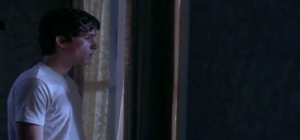

Figure 2: Nathan’s sexual assault scene. Dream Boy. Here TV, 2008.
For example, the homosexual spectator is positioned to relate to the narratives of LGBT films. The characters, the adversity and the narratives can be directly connected to our own understanding of struggling to find our identity in a world that mainly promotes straight love. However, for a heterosexual audience member, you are not positioned to directly relate to the narrative or the protagonists, but rather educated on the hardships of identifying as LGBT and struggling with your own sexuality. I would hope that heterosexual spectators gain a deeper understanding of the LGBT struggle from these films. Pushing them to be a LGBT ally, rather than someone who believes that everything is good for the LGBT community “because it is 2017.”
Dream Boy is, from start to finish, a hard-hitting representation of gay lives in southern America. The film follows protagonist Nathan as he struggles to find love in America’s homophobic southern society. Stephen Bender’s performance as Nathan highlights how his desire for love makes him an outcast in society. What Bender’s performance does perfectly is symbolise Nathan as a victim, almost visually portraying him as a damaged dove, which is used frequently through white clothing (see Figure 1). Most likely, it is the timidity that the audience love about Nathan’s character, since his coy walk, quiet dialogue and shy persona pull a sympathetic response from the audience. This response becomes established through the audience’s connection to the protagonist. His introverted personality reflects a time in everybody’s life when we felt as if the world was coming crashing down on us. I believe that taboo topics such as sexual assault and both physical and mental abuse would pull the same distasteful reaction out of anyone, regardless of their sexual orientation.
The reception of social issues such as sexual assault and domestic abuse in LGBT films, among the diverse society that contemporary spectators live in, is dependent more on the individual film and films’ marketing industries rather than the audience. I would suggest that LGBT films are marketed towards LGBT people as it’s a ‘safe’ demographic and this particular audience is more likely to understand the content. However, within every decade an LGBT film breaks through into mainstream media to show society that all sexualities are mutually understanding of each other, and that mostly all of us stand universal in understanding each-others problems. In a Huffington Post blog, Kevin Thornton says “watching Brokeback Mountain in a mainstream, middle-American movie theatre was a strangely profound performance. Handsome movie stars portraying anything similar to my own life was, for me, uncharted territory.” The fact many LGBT people feel as if the portrayal of their type of love is specific to LGBT films, making homosexual love in Hollywood “uncharted territory”, highlights how certain genres market certain audiences and isolate others.

Figure 3: The Bus Scene. Dream Boy. Here TV, 2008.

Figure 4: Brokeback Mountain. Image from The Hollywood Reporter
However, every now and then, films such as Brokeback Mountain (Lee, 2005) (Figure 4) and Moonlight (Jenkins, 2017) break out into mainstream media and show audiences that they can co-exist together.
Within Dream Boy there is a distinctive distance between Nathan and the identity of a stereotypical American hero. Hollywood would have its audiences believe that the typical, and therefore only qualifying hero is a white, strong, heterosexual man. Although, it’s somewhat typical of American-produced films to represent the American hero through alternative identities, such as Paper Towns (Jake Schreier, 2015) and The Perks of Being a Wallflower (Stephen Chbosky, 2012), (see Figure 5), these protagonists are positioned as alternative identities as they completely contradict the stereotype of the American hero (see Figure 6). Most hold an average body shape and awkward personality; which usually isolates them to the periphery of society. As mentioned above, though this is somewhat common in film industries such as Hollywood, what is not as common in these films is the narrative resolution found in Dream Boy. Whereas, protagonists in heterosexual film narratives normally embark on a personal journey of self-discovery, Nathan is raped and killed. Nathan is never given the chance to embark on his own journey of self-discovery due to the protagonist contrasting the stereotype of an American hero. In mainstream cinema, this outcome is unlikely. However, in LGBT cinema this narrative resolution is common and although it is upsetting, it highlights a substantial point: LGBT people are still discriminated against daily, these people are still killed, abused and isolated, and by LGBT films highlighting this, it shows audiences that we still have a long way to go in order to achieve acceptance. Nathan’s homosexuality disconnects him from America’s consciousness, as his homosexuality is not as common as the heterosexual love that is portrayed in mainstream cinema and therefore his death makes the audience feel uncomfortable. Had this film been about heterosexual love, I believe the outcome would have been quite different. If Nathan had been a woman and Roy a man, they would have proclaimed their love together in a big Hollywood-style conclusion. However, because they are both homosexual men living in 70s Christian America, the outcome isn’t as romantic.
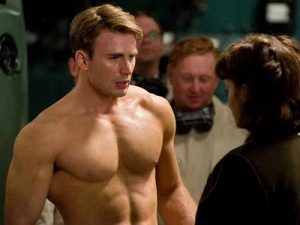
Figure 5: Captain America’s transformation. Captain America. Marvel Studios, 2011
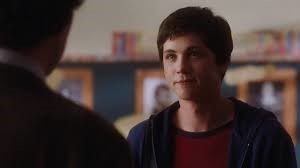
Figure 6: Captain America’s transformation. Captain America. Marvel Studios, 2011
Although Dream Boy manipulates the audience into feeling sad that Nathan is stripped naked, raped and killed (see Figure 8) for being who he is, do we feel as sad when we see governments forming coalitions with homophobic parties? Do we feel as sad when for the first time in years, the White House hasn’t celebrated Pride? Do we feel as sad when the US distributers are accused of removing gay references on DVD covers? This was the reality back in 2014 when US distributors watered down LGBT references on the Pride (Warchus, 2014) cover to get it to sell. In a world that discriminates against LGBT people daily, with world leaders such as Donald Trump attempting to ban transgender American citizens from the military, films such as Dream Boy make the audience realise how problematic it is to alienate LGBT identities, as Nathan’s demise from awkward school boy to friendly ghost makes us realise that we need to accept everyone for who they are, and give them a good quality of life. Otherwise, we are no different to those who raped and killed Nathan.
It is no secret that both Roy (Nathan’s lover) and Nathan are ashamed of who they are because of the church and their society. The film doesn’t make you question why they are ashamed of who they are, because you, as the audience, already know. What it does is makes you question why it is okay for these institutions to marginalise LGBT identities to the point that the likely outcome is depression, death or other dark paths. The Trevor project reports that LGBT youth are 4 times more likely to commit suicide than those who identify as straight, with those who are rejected by their families 8.7 times more likely to commit suicide than the average LGBT teenager.[1] What it does is it makes you ask: why is it so hard for these people to survive, when all they are doing is looking to love? And there lies the beauty of this film, it is not asking you to blame the protagonists for who they are but rather blame the society, the religion, the people who make these innocent souls feel like they are dangerous just for looking for a love.

Figure 7: Leonardo’s walking home scene. The Way He Looks. Lacuna Filmes, 2014
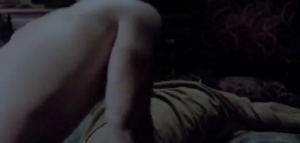
Figure 8: Nathan’s Rape scene. Dream Boy. Here TV, 2008
Despite the negative representation of gay identities in Dream Boy, a film that shows that gay relationships aren’t allowed to function in many parts of this world as people won’t accept them for who you are, contemporary films set in modern eras such as The Way He Looks explore a more pluralistic representation of LGBT identities (see Figure 8). Within The Way He Looks, Leonardo, the main protagonist is blind and therefore battles two adversities: one being his homosexual identity and the other being the identity of a blind man. What is clever about making Leonardo both gay and blind is that it creates this sense of purity and transparency around gay identities that is lacking from the film industry. Leonardo is presented as somebody who doesn’t judge people on how they look but rather who they are. This type of acceptance often appears to be lacking in modern society.
In some LGBT films, such as King Cobra (Justin Kelly, 2016) the identity of the gay man is very much attraction-focused; the protagonists appear superficial by professing an exaggerated type of self-love. The whole narrative of King Cobra follows Brent as he uses his body and good looks to navigate popularity in the porn industry. These characters, such as Brent, appear fixated on both themselves and the people they are looking to engage with sexually. In these films, the characters would only be attracted to those who have the perfect body and looks. Therefore, gay identities are being presented as a selfish, narcissistic version of the human being. I believe this character is a damaging representation, as these qualities aren’t received well in modern society. Films such as House of Boys (Jean- Claude Schlim, 2009) and Going Down In La La Land (Casper Andreas, 2011) portray the identity of a perfectly sculptured, sexually charged, gay man. The problem with such identities is that it suggests that gay men are all this superficial, arrogant model-type character, when in reality gay men exist in the same space as every man and woman on this planet, (see Figure 9). However, Leonardo’s character abolishes stereotypes, and it is not clear he is gay until halfway through the film. What is clear from the opening scene is that Leonardo wants to be loved. The fact the point isn’t made that he wants love from another man until half-way through the film questions our own tendency to jump towards the narrative of heterosexual love.
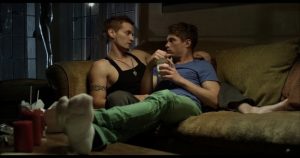
Figure 9: The Embrace Scene. Going Down In La La Land. Privately funded, 2011.
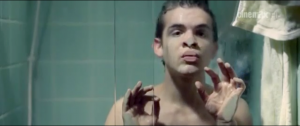
Figure 10: Shower scene. The Way He Looks. Lacuna filmes, 2014.
Additionally, the fact Leonardo is blind also calls into question the argument that is played through many homophobic debates. The idea that homosexual love is taught, and can therefore be untaught. The fact Leonardo is blind suggests that he is feeling from his heart and his soul. His love is pure and therefore he is not falling in love through visual attractions or teaching himself to adhere to alternative identities, but rather, listening to the sound of his lover’s voice and the touch of his partner’s skin. His blindness abolishes the argument that sexuality is a choice, as Leonardo is incapable of directly learning this type of love of things he’s seen in real life. Leonardo shows that gay love is not about mirroring other people’s actions but rather acting out on what your heart and mind is telling you to do. This purity is continued throughout the film but is rather distinct in one particular scene. Leonardo makes it evident through his conversation with his best friend Giovanna that he longs to be kissed. The film then cuts to a close up of Leonardo in a shower, the close up is of his lips and he is kissing the shower’s glass (see Figure 10). This transparency mimics Leonardo’s state of mind towards homosexual love, as he believes it is pure and normal. In this scene, lies the beauty of The Way He Looks, as Leonardo’s identity as a gay man is presented as something that is natural. The protagonist’s lack of sight suggests that his identity has been made from the heart.
Although the treatment of gay protagonists is vastly different between Dream Boy and The Way He Looks, it would be reductive to say that Leonardo doesn’t face similar discriminations to Nathan, though perhaps the oppression isn’t as drastic. In the narrative coda of The Way He Looks Leonardo’s school friends shout abuse to the protagonist and his partner. Leonardo reacts to this by holding his lovers hand, causing the nearby students to react saying “There you go douche” (see Figure 11). This short scene highlights how contemporary attitudes to gay identities are more accepting. However, there is still some oppression that forms in contemporary society.
Whereas Nathan, in the 1970s, experienced traumatic homophobia and had no one to talk to, Leonardo has his friends to turn to and his school-friends who quickly shut down homophobic behaviour. The juxtaposition between the two highlights the change of people’s attitudes towards accepting gay identities. Therefore, it would be incorrect to suggest that Nathan only experiences adversity because the film is set in 1970s rural America, since, Leonardo, a 21st century teenager in Brazil, still faces oppression. This means that although there is still the representation of oppression in LGBT films within modern cinema, there has been a shift in the connotation of gay identities since 1970s society, which has been reflected in the contrast between Dream Boy and The Way He Looks.
Despite the fact they are produced in different countries and set in different eras, both Dream-Boy and The Way He Looks exist in the same space, as they both question the audience’s perception of love and the idea of ‘free love’. Whilst, it is comforting to know Leonardo’s story isn’t as dark as Nathan’s, we shouldn’t forget the hardship that LGBT identities face daily. Where both films find common ground is that they both make the spectator look inwards and question him or herself. Are you the type of person who stands in the way of free love? Do you agree that Nathan should be victimised? Or do you agree that gay identities, like Leonardo should love purely?
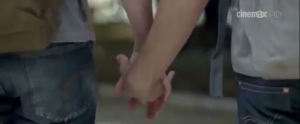
Figure 11: The narrative conclusion. The Way He Looks. Lacuna filmes, 2014.
[1] http://www.thetrevorproject.org/pages/facts-about-suicide
